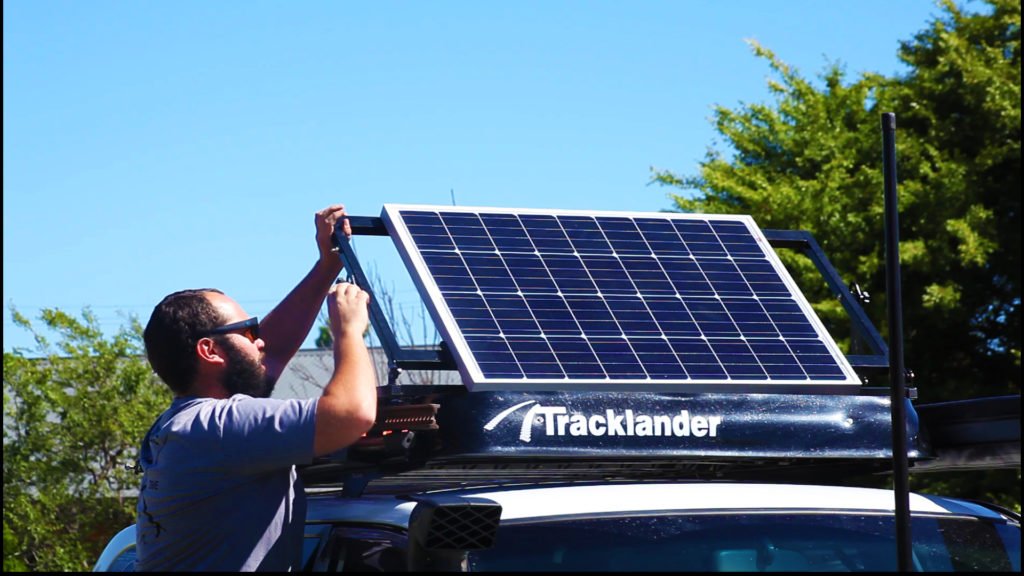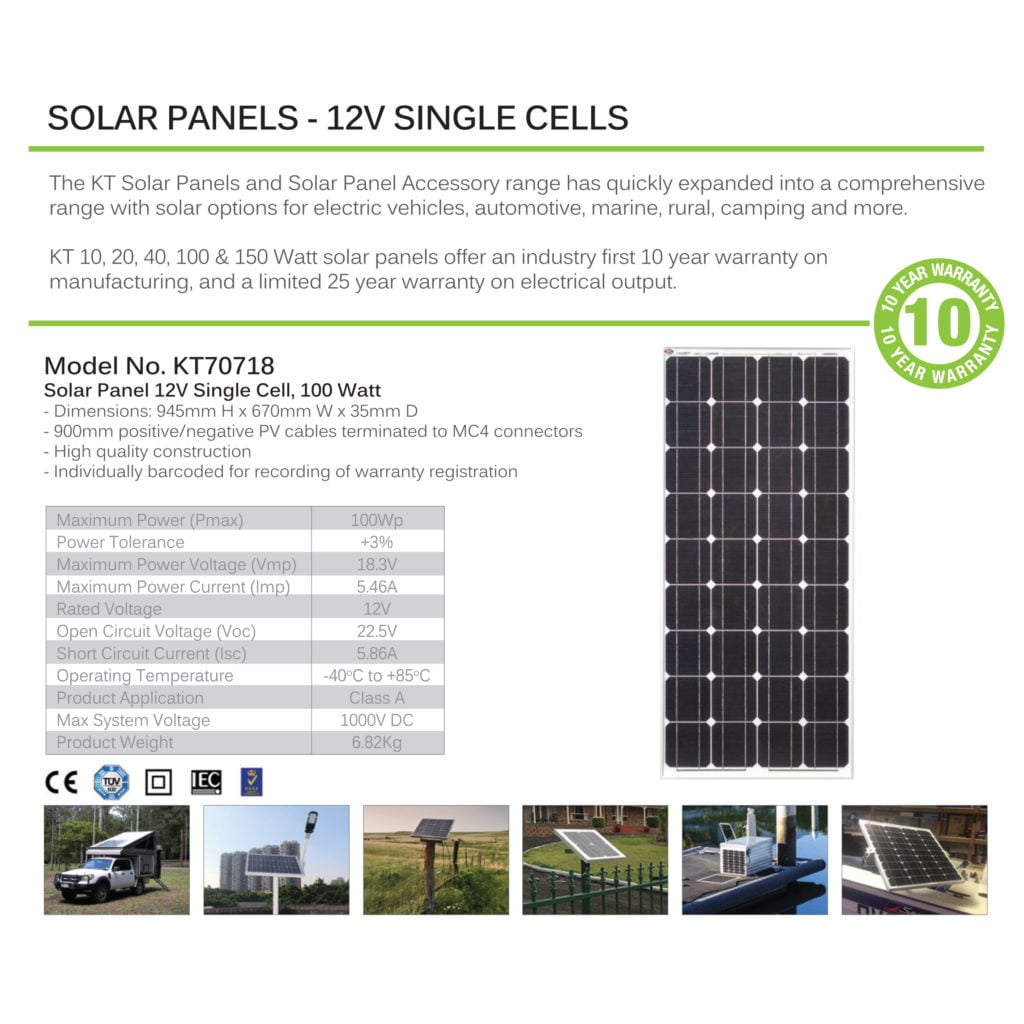Words by Jed Currey

Solar technology has been around a while now, infact if you look up a bloke by the name of Charles Fritts you will see we have come a long way in harnessing the energy of the sun to power our needs in every corner of the globe.
Vehicle mounted solar panels are increasingly popular with technology coming along in leaps & bounds in the last 15 years. You simply can’t beat harnessing the free power of the sun to charge battery systems In the bush, facilitating many peoples goals of “off- grid” touring. We have a KT Cables 100W Panel on our Tracklander roof rack tilt bracket which looks after our power needs.
What is off-grid touring?-
Like the vast majority of our tag-a-long adventures across WA we have a focus on remaining off the grid or in plain English; away from people, facilities & essential services . Solar is a green way to spend multiple days, weeks or months in the bush harnessing the suns energy to power your own electrical requirements. Cold beer thanks to the sun – that’s a win!

How does a solar panel work? – ( the simple version )
Simply put, a solar panel works by allowing particles of light, known as photons, to knock electrons free from atoms, generating a flow of electricity. Solar panels are made up of a number of photovoltaic cells & linked together they provide raw electrical power. Sun + Panel = Cold beer… coz science! 
What to consider?
The first thing to consider is the power needs of your 12V set up ( you can see our own article on the tour vehicle set up here) & sourcing a solar panel(s) that will output converted current at a higher rate than is being used & you will essentially top up your batteries instead of draining them (in ideal conditions.
It’s important to note, weather, angle, panel surface cleanliness, shadows, wiring, regulators, connections + other factors all have a direct effect on the efficiency of a panel, so as saying goes bigger is better in the fact it allows some redundancy to keep things topped up in less than ideal conditions.
Our power needs –
We have a 100W KT Cables solar panel with the following specs –

KT Cables ‘KT Solar range’ offers a 10 year manufacturing warranty & a limited 25 year warranty on electrical output which is pretty good considering they were designed with off-roading in mind.
We have a 75L Dual Zone fridge running off a Full River 120A/H AGM battery. The fridge draws around 8 Amps on start up with a max running load of 3.8amps.
Mounted to the Tracklander tilting solar bracket we have used rubber under the alumium extrusion to assist in absorbing the rigours of the off-roading vibrations we encounter. A cable length of 2.4m is used to travel from the solar panel, into the roof & down to our battery management unit on the rear draws, so a thicker cable size was added (16BNS twin core). Weatherproof MC4 connectors were used above the roof-line with Anderson plugs utilised in cab with an additional measure to use conduit to protect the wiring further from abrasion or rub throughs.
We had to drill out a spare bolt hole in our roof channel by about 1.5mm to accept the new cable & this was painted & left to dry before new cable was inserted. Silicone was used to seal the water out at the end of the process.

Solar power is fed into a Redarc BCDC1240D which has an in-built MPPT Solar regulator. When the unit detects a solar input, it will use solar power first before using power from the vehicle power output. This is what is known as ‘Green Power Priority’. The benefit to this, is that it places less load on your vehicle’s alternator by harnessing the energy of the sun. Our KT panel is a great match up to this product.

**Handy Tip**
Running any twin core cable from outside the vehicle to the inside of the vehicle ensure you reseal the sheath from water ingress as it may inadvertently act as a funnel between the wire cores & damage will occur.
You can try this calculator to see your own power requirements here .
Check out the short video below of our solar system set up on the Cruiser.
You can see the KTSolar’s range of panels & accessories here 

